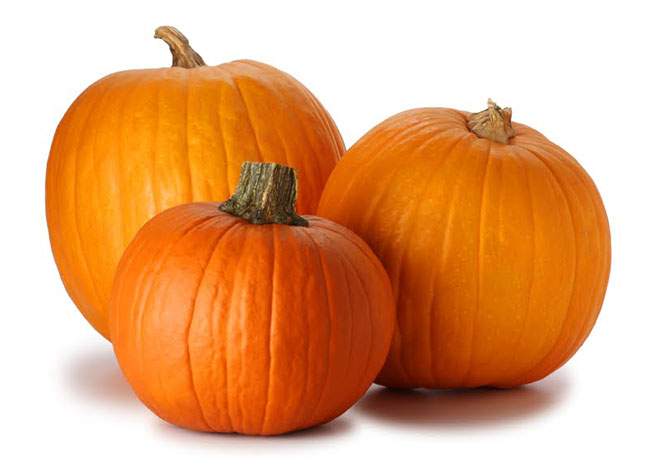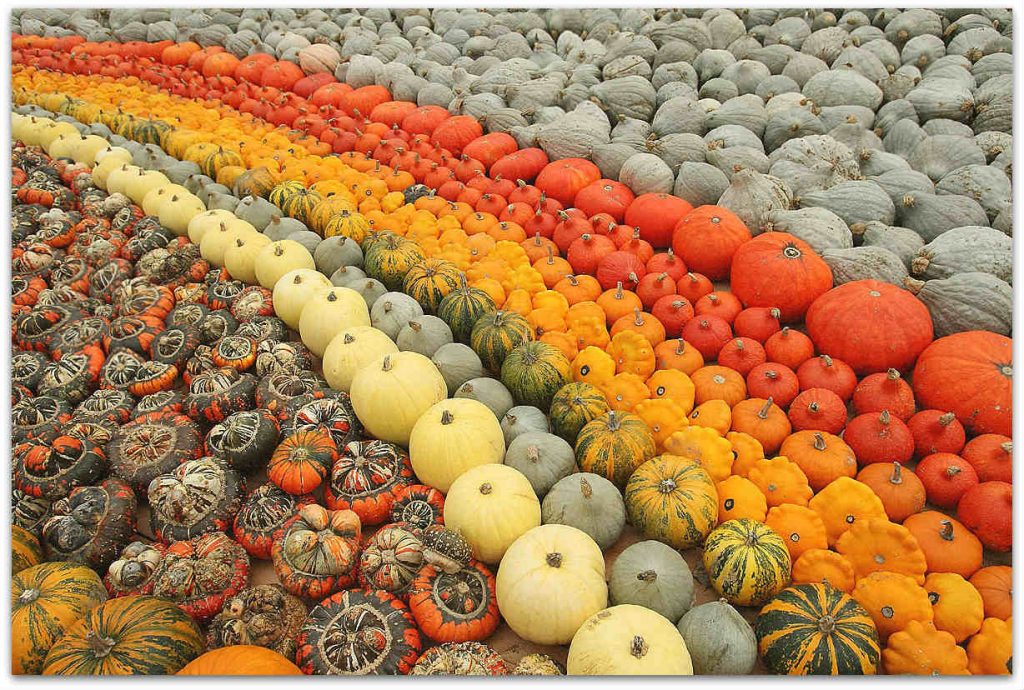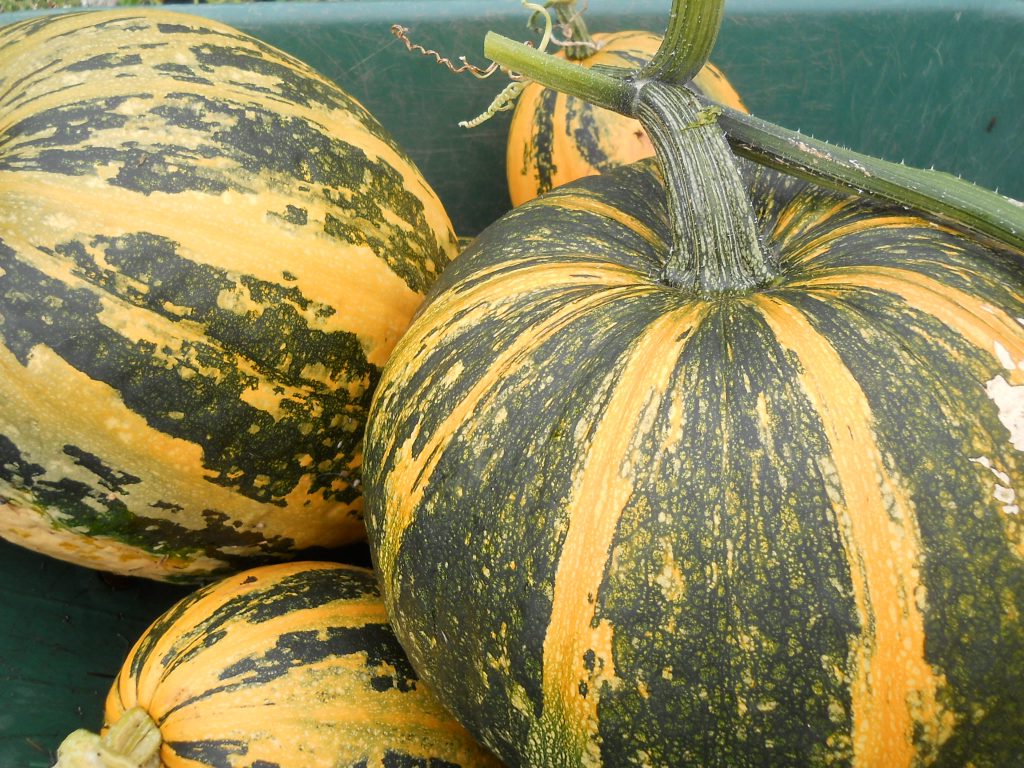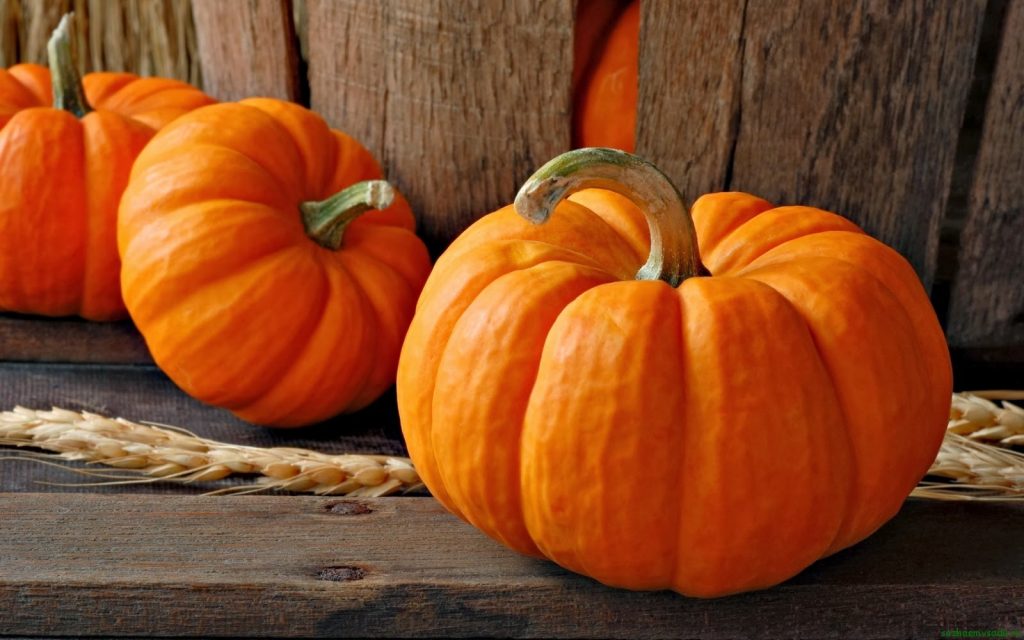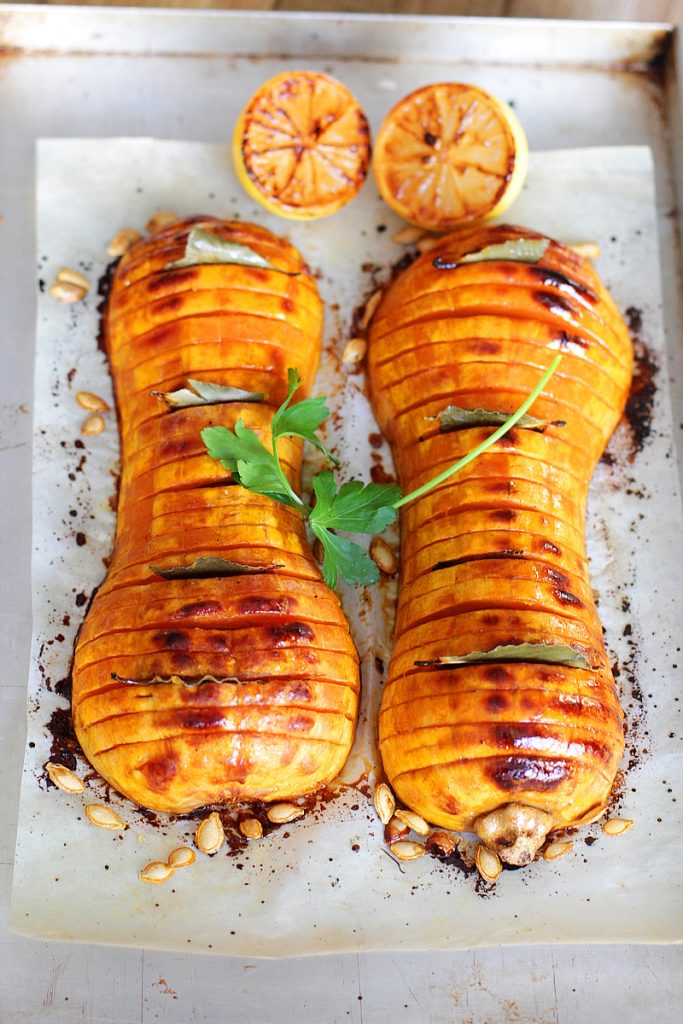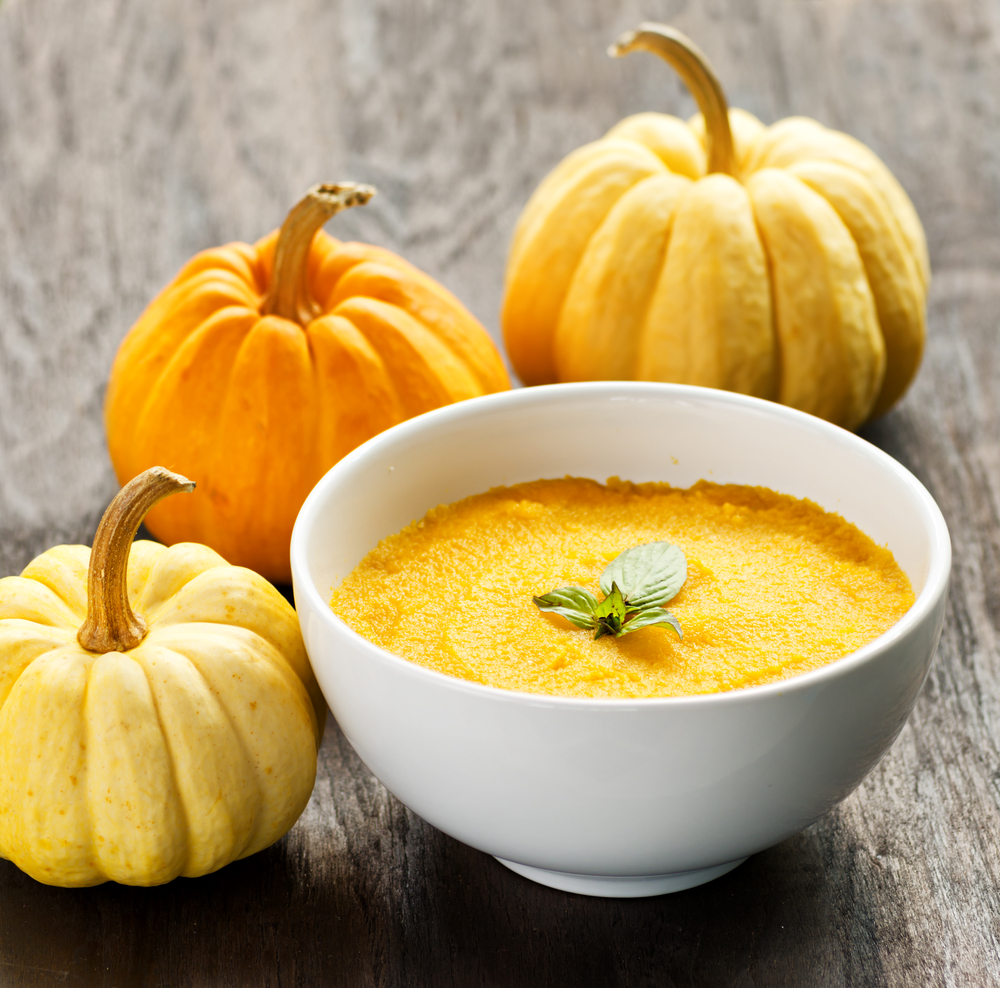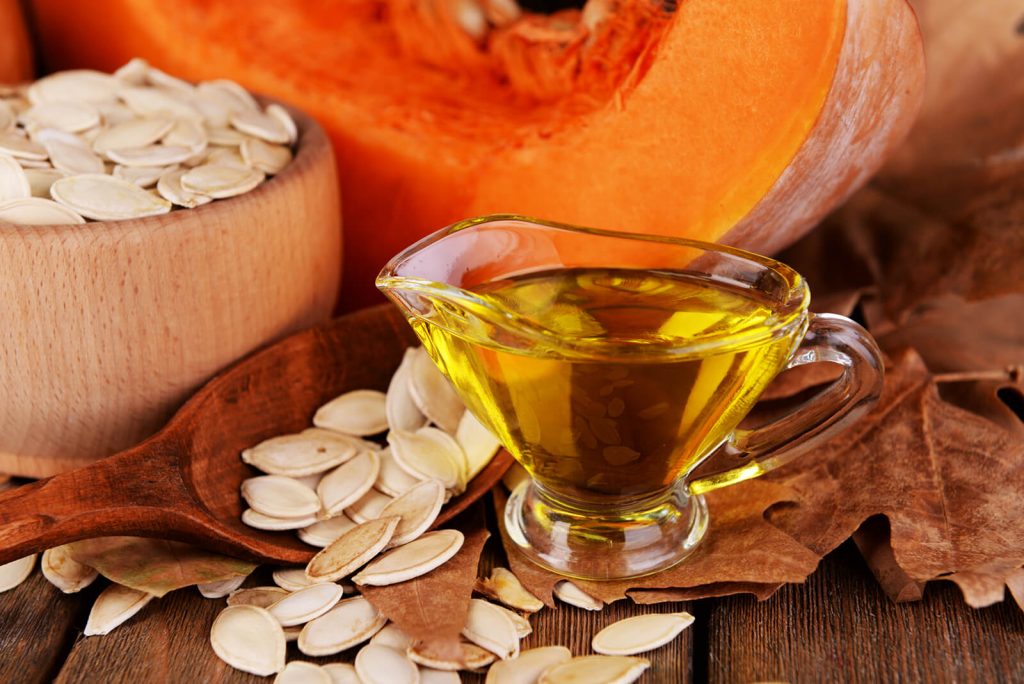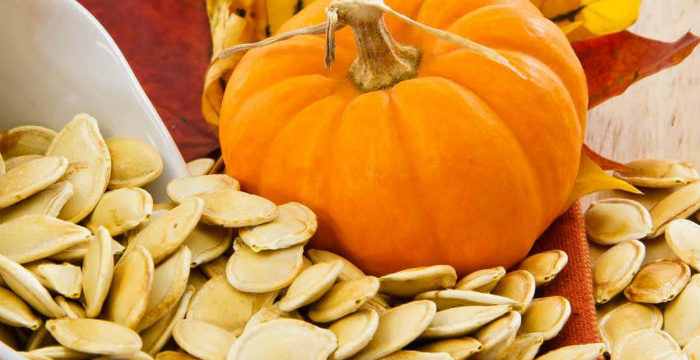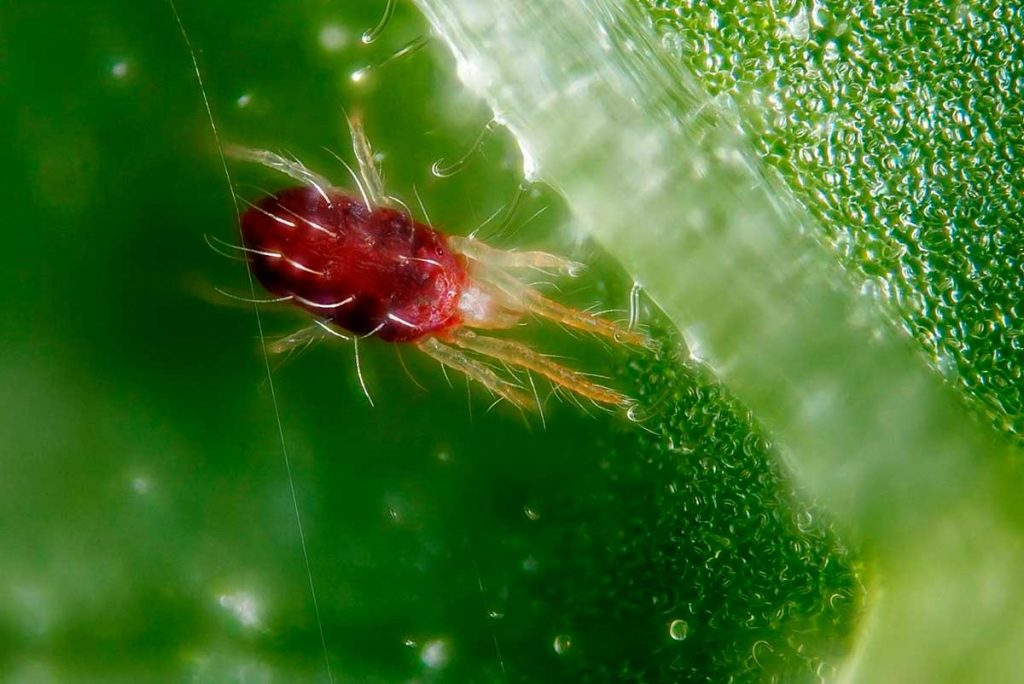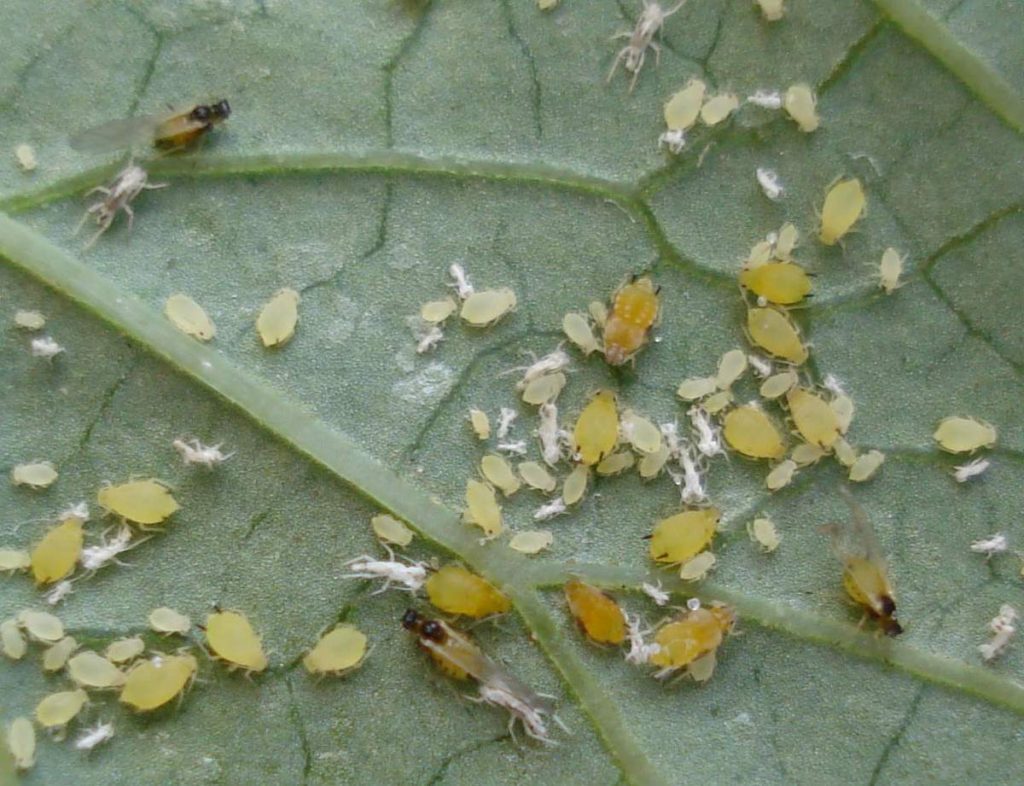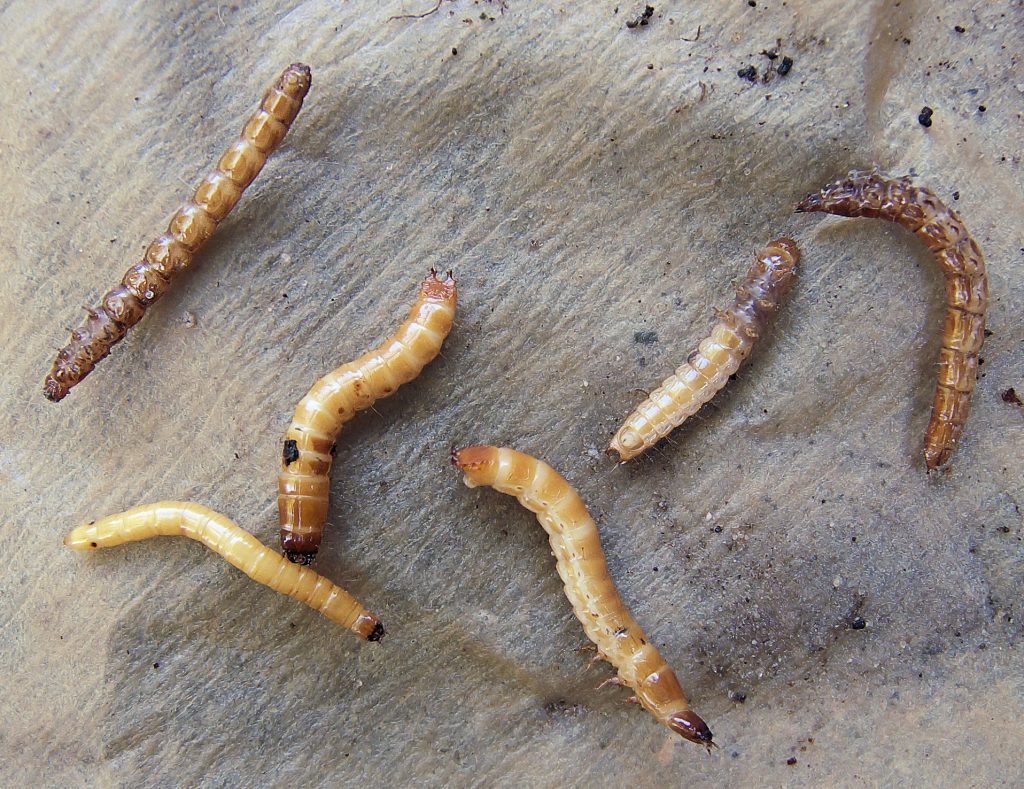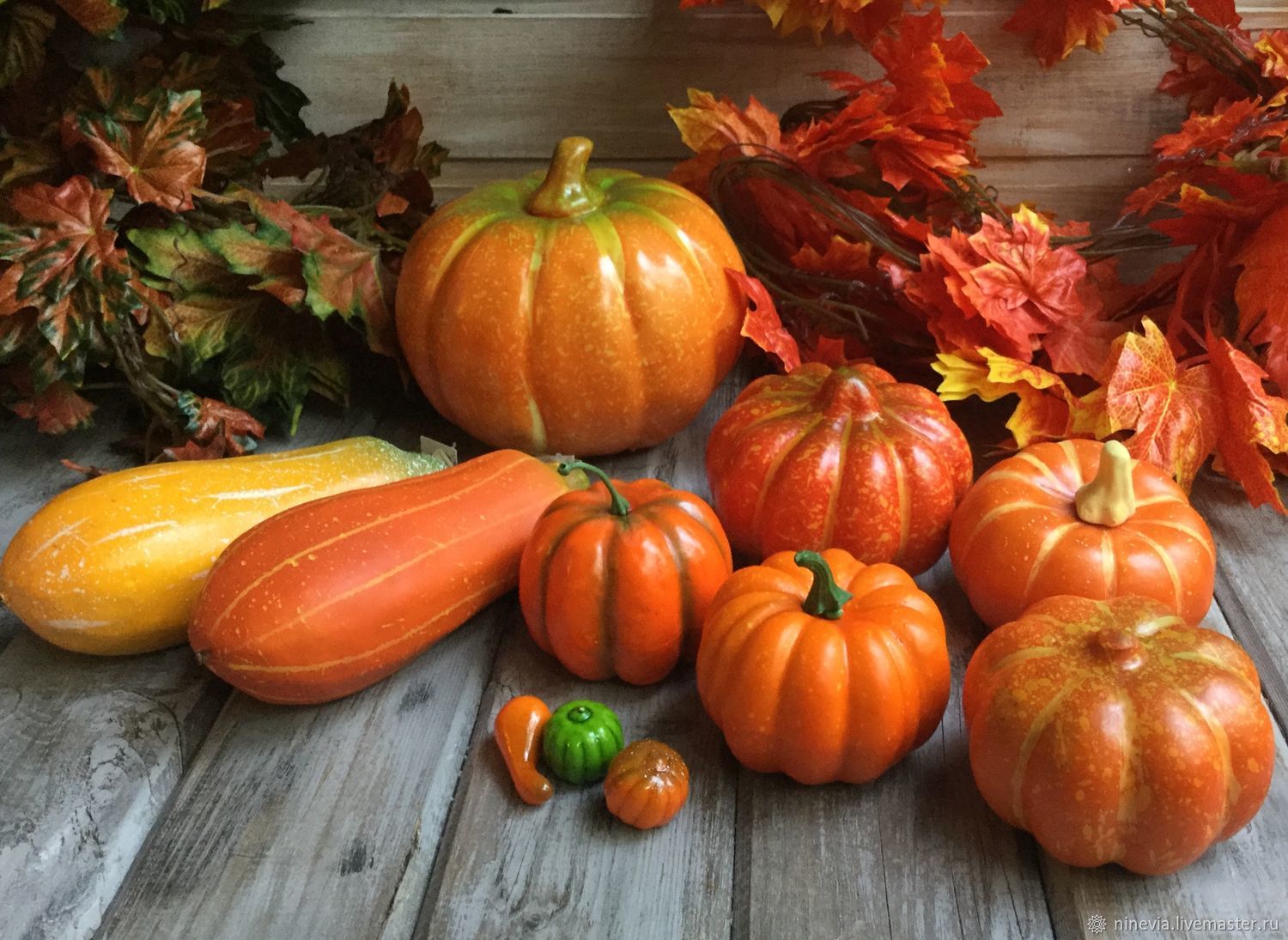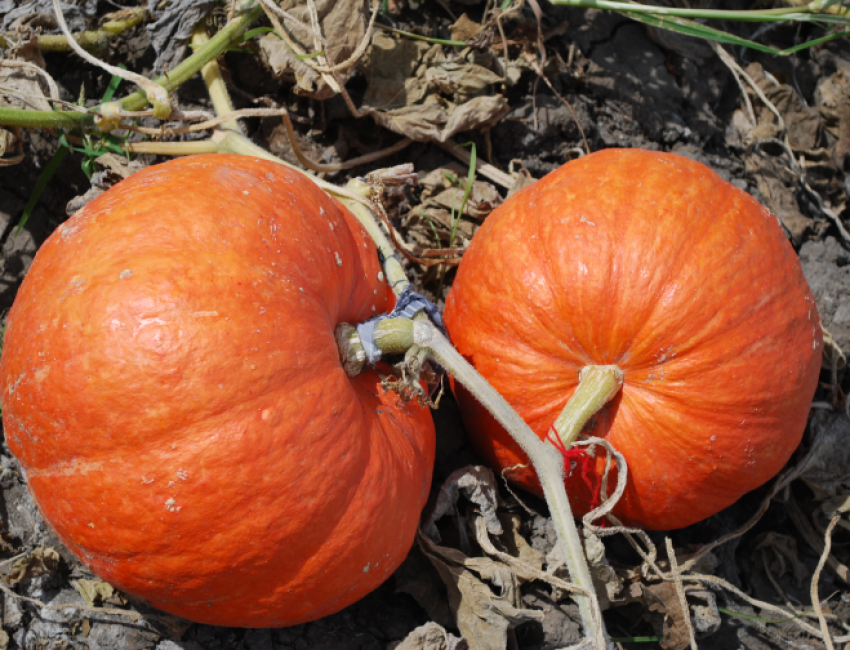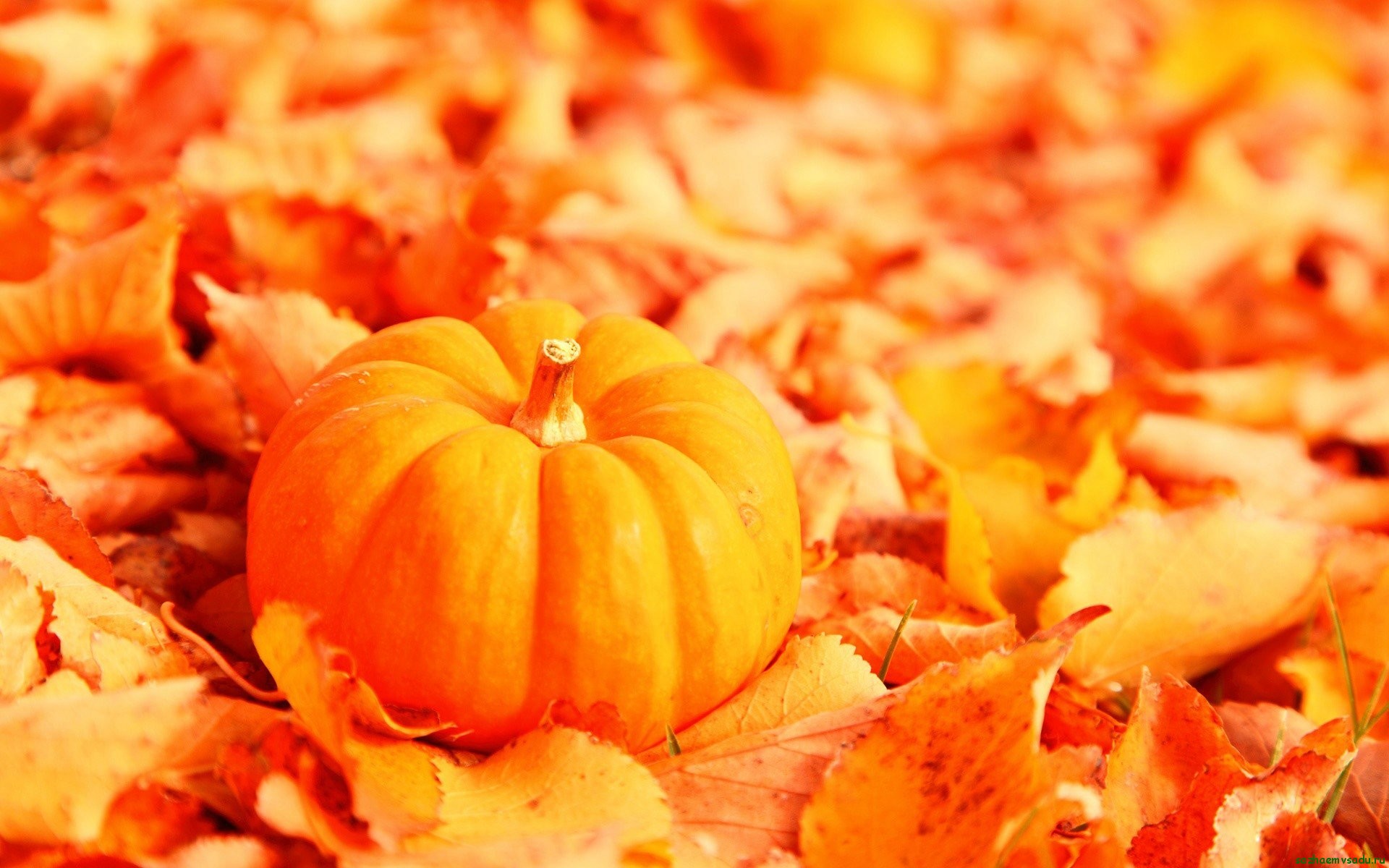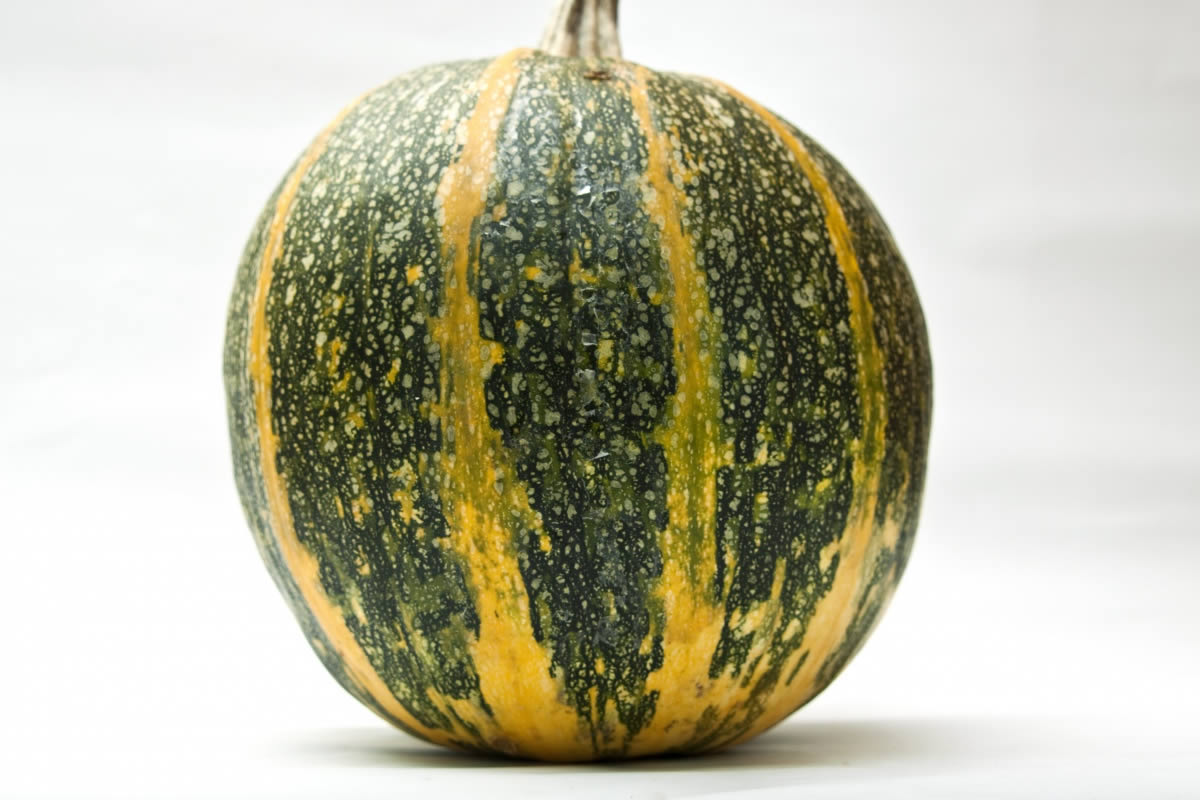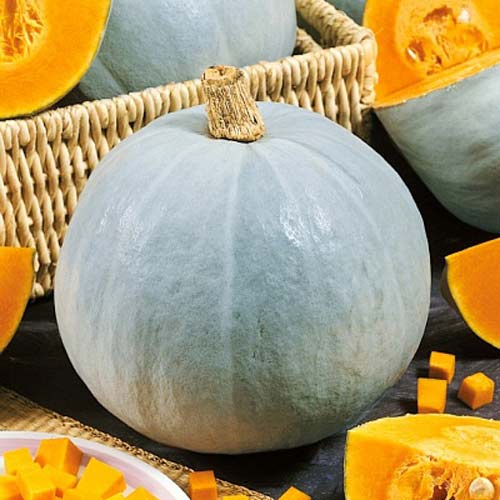Content:
The pumpkin is truly one of the most decorative adornments of any site. It is impossible not to notice her. In addition to visual appeal, it has many beneficial properties and is used to prepare a variety of delicious and nutritious dishes.
Description of pumpkin
Pumpkin cultivation has been going on for over 5 thousand years. The origin of the culture belongs to its wild relatives, grown by the Indians of Mexico and Texas. The homeland of the pumpkin is North and Central America. This is an unpretentious plant that tolerates well the various climatic conditions of Europe, the USA, India and China. Russia ranks third in pumpkin cultivation.
The crop has spread all over the world due to the high nutritional value of the fruit and seed pulp, as well as the excellent yield. Pumpkin is not only a Halloween attribute, but also an element of the wedding ceremony. The pumpkin, or harbor, among the Little Russians was a symbol of refusal to the groom during his matchmaking.
Common pumpkin (table) belongs to the genus of annual herbaceous plants, belongs to the Pumpkin family. All about the pumpkin, the main features:
- The fruit is a spherical pumpkin, covered with a hard, smooth, ribbed skin.
- The pulp is loose, fleshy, orange in color.
- The taste is moderately sweet.
- Flowers are large, yellow or white, singly or in bunches. Corolla in the form of a funnel, the length of which is 5-7 cm, width - 6-7 cm. Flowers are unisexual. Male ones are located on long pedicels, female ones - on short ones. Cross pollination.
- Seeds are large, flat, from 1 to 3 cm in size. They are located under the pulp, in the seed space. Outside, they are covered with a woody sheath of white with a yellowish tinge or cream color, inside - a gray-green film.
- The stem is creeping, pentahedral, pubescent, up to 7-8 m long.
- Leaves are alternate, large (up to 25 cm long), rigid, five-lobed, heart-shaped, covered with stiff hairs. In the axils of the leaves, antennae are located in the form of a spiral.
- Pumpkin root system - tap root, strong branching.
Is a pumpkin a berry or a fruit or a vegetable? There is still no exact definition of what a pumpkin is. The plant can be attributed to the fruit because of its juiciness. Botanists cannot decide if a pumpkin is a vegetable or a berry. For the gardener and culinary specialist, it is more common to call it a vegetable. Scientifically, it is a berry.
Types and varieties of pumpkin
Pumpkins come in a wide variety of species, varieties, shapes, colors and sizes. In total there are over 50 varieties of pumpkin. The color spectrum ranges from dark green to deep orange, up to red. There are varieties of a gray-blue hue. There is a giant among pumpkins - Atlantic Giant. A representative of this variety can on average weigh about 80 kg. The largest fruit grown by American farmer Chris Stevens reached a mass of 821.2 kg. In many countries in October, on the eve of Halloween, the "Biggest Pumpkin" competition is held.
Among the miniature varieties, Jack be Little gives the smallest fruits. A pumpkin the size of a baby's fist reaches a mass of only about 200 g. This variety can even be grown on the balcony. There is a variety of pumpkin crossed with melon.The variety is distinguished not only by the sweetness of the pulp, but also by a pleasant aroma.
By their purpose, pumpkins are classified into 3 types:
- decorative - for decorating walls and fences;
- fodder - large pumpkins for animal nutrition;
- canteens are for a person.
Feed and table types do not have a clear distinction. Both those and other varieties can be used for both human and animal nutrition. It depends on the amount of the harvest, the taste of the fruit. Table pumpkin varieties, in turn, can be classified as nutmeg, hard-bore and large-fruited.
Butternut squash
Butternut squash is the tastiest. Its sweet, aromatic flesh can even be eaten raw. The characteristic features of nutmeg varieties are late ripening and thermophilicity, therefore planting in the southern regions is recommended. Growing varieties with seedlings gives an excellent harvest in central Russia. Seeds are sown in April and seedlings are planted in early June.
Distinctive features:
- green striped or yellow-beige crust;
- the peduncle is pentahedral, expanding downward;
- the pulp is light orange.
Butternut pumpkin varieties: Vitamin, Bylinka, Butternut.
Hard bark gourd
Hard bark gourd is the most common variety. It has the tastiest seeds. Differs in early ripening: late August - early September. There are two varieties of it: gymnosperms, spaghetti pumpkin.
Main features:
- very hard, stiff bark, pale or brownish orange, with dark stripes;
- the peduncle has pronounced grooves;
- leaves in the form of a pentagon;
- stiff, ribbed stem with spiny pubescence;
- weight varies from 1 to 20 kg.
Sorts of hard-bore pumpkin: Smile, Acorn, Aport, Freckle, Kustovaya Gribovskaya 189, Dachnaya.
Large pumpkin
Large-fruited pumpkin has a friable pulp with a fibrous structure, a very thick rind. A distinctive feature of the plant is the longest shelf life, cold resistance.
The main characteristics of the varieties:
- very sweet pulp, sugar content reaches 15%;
- the stem has no furrows, rounded;
- the peduncle is in the form of a cylinder;
- leaves are kidney-shaped.
The most common varieties: Rossiyanka, Kroshka, Obyknovennaya, Gribovskaya winter, Winter sweet, Kupchikha, Lechebnaya, Volzhskaya gray.
Growth features
Pumpkin loves light, warmth and moisture. The flowering period is June, July. Fruit ripening time - August, September. The favorable climate for the plant is subtropical or temperate. Light frosts and drying out of the soil are destructive for her. Before planting, the soil should be warmed up to + 14 degrees. The plant responds very well to organic fertilization. You need to be careful with chemical mineral nutritional complexes. On the eve of harvest, they can negatively affect the taste.
Growing pumpkin largely depends on the temperature regime. Depending on the resistance to cold, varieties are distinguished for temperate climates, northern latitudes, as well as thermophilic varieties. The plant is planted in open ground, in a greenhouse, as well as using a long seedling period. To get the best results, choose the most suitable variety for each region:
- For the Urals, frost-resistant, early and medium-early varieties are suitable: Smile, Altayskaya 47, Amazonka, Titan, Ufimskaya. The seeds are hardened in the oven, then soaked and planted on seedlings in cups, 10-15 cm high. The containers covered with foil are removed to a warm place.
- The harsh conditions of Siberia require varieties with a short growing season, resistance to a harsh continental climate: Freckle, Rossiyanka, Zhemchuzhina, Adagio, Honey Beauty, Winter Sweet. After planting seedlings in open ground, the plant often has to be protected from unexpected frosts with a film. During the day, the shelter must be slightly opened for ventilation.
- For the Moscow region, Srednaya Polosa, early varieties that have time to mature in a short summer period are suitable: Sweet pie, Dachnaya, Sukat, Lechebnaya, Premiere. Seeding is done in May, 2-3 seeds in each hole, to a depth of about 10 cm. As they grow, only the strongest plants are left.
- In the Northwest, it is necessary to plant varieties with medium cold resistance: Acorn, Orange Kustovaya, Kroshka, Almond 35. An important characteristic of a properly selected variety is early maturity.
Each of the varieties has its own characteristics and taste. But, as you know, the most delicious pumpkin variety is the one that is grown by hand.
Pumpkin properties
While it is still not clear whether pumpkin is a vegetable or fruit, there is no doubt about its invaluable health benefits.
The nutritional value
This beautiful and tasty plant has a high nutritional value, as it contains a record amount of vitamins, macro, and microelements. Pumpkin is a dietary product, since its calorie content per 100 g is only 22 kcal. It is 91.8% water. Carbohydrates contain 4.4%, fats - 0.1%, organic acids - 0.1%, dietary fiber - 2 g, proteins - 1 g, ash - 0.6 g, starch - 0.2 g. , mono, - and disaccharides - 4.2 g.
The list of nutrients contained in 100 g of pumpkin is truly impressive:
- vitamins: B9, B1, B2, B5, B6, B17, C, PP, E, A, beta Carotene, niacin;
- trace elements: copper, fluorine, zinc, iron, manganese, iodine, cobalt;
- macroelements: potassium, phosphorus, calcium, chlorine, sulfur, magnesium, sodium.
The rich chemical composition provides numerous health benefits of pumpkin.
Healing properties
Why is pumpkin useful? It is considered one of the best remedies for the restoration and maintenance of the health of the organs of vision, thanks to the content of vitamins A, B6, B2, E, as well as zinc. The high content of carotenoid in the pulp protects the retina from destruction, neutralizes the effects of free radicals. Vitamin A, necessary for visual acuity, is better absorbed due to the zinc content in the composition. Riboflavin (B2) helps to improve light and color perception.
In terms of B-carotene content, pumpkin overtook carrots, exceeding its value by 5 times. Carotene together with vitamin E prevents the risk of cancer, strengthens the immune system, and protects against viruses and bacteria.
Folic acid in the pulp activates the synthesis of red blood cells, red blood cells responsible for oxygen transport. There is a stimulation of the formation of leukocytes - the body's defenders. Rare vitamin B17 (T) regulates blood clotting and improves platelet formation.
Pumpkin has a therapeutic effect in ulcerative diseases of internal organs. With gastritis, it is good to eat pumpkin pulp dishes: cereals, desserts, salads. The plant helps to reduce the high acidity of the stomach, as it creates an alkaline environment. The plant relieves heartburn and belching.
The abundance of fiber in pumpkin pulp is beneficial for cleansing the intestines. Swollen dietary fiber absorbs toxins and removes them naturally. To restore healthy intestinal motility, it is enough to eat a piece of boiled pumpkin for dinner.
It is useful for a person who wants to lose weight to include pumpkin dishes in their diet. Pumpkin is a source of L-carnitine, which is essential for the normalization of metabolism and the breakdown of fat. Potassium in the pulp allows you to remove stagnant fluid from the tissues - the cause of body swelling. It also removes excess volumes.
What vitamins in pumpkin are necessary for the stronger sex? A man who wants to restore sexual function must definitely consume pumpkin. It contains zinc, which normalizes the activity of the prostate gland and promotes the synthesis of sperm. The presence of vitamin C, B1, B3, B6 and L-carnitine makes it indispensable for increasing endurance, strengthening immunity, and assimilating fatty acids.
For a woman suffering from fibrocystic mastopathy, it is useful to use the pulp of the pumpkin both internally and externally. It is also an excellent preventive measure. Thanks to vitamin E, the aging of cells slows down, the condition of the skin improves. Eating pumpkin can help alleviate the symptoms of menopause.
The mild choleretic effect of pumpkin will help after eating heavy food, as well as as a preventive measure. 500 g of raw pulp, chopped in a meat grinder, are mixed with 100 g of olive or sunflower oil. Add 2 tbsp to the mixture. l. buds of warty birch and insist for a week. The medicinal infusion should be taken in 2 tbsp. l. before meals three times a day.
The plant is an excellent tool for cleansing the liver from waste, restoring hepatocytes, and activating cell division. For a beneficial effect on the liver, it is enough to spend 1 fasting day on a pumpkin. To do this, rub 0.5 kg of raw pulp on a grater, divide the resulting mass into 6 servings and eat during the day.
Pumpkin seeds contain unsaturated fatty acids. Arachidonic fatty acid helps against Alzheimer's disease, improves mental ability, memory, strengthens muscles. The seeds contain a large amount of essential amino acids, vitamins, macro- and microelements. The mild and safe action of pumpkin seeds against tape parasites is known, especially in children. Pleasant and healthy pumpkin seed oil is used as an additive to food to improve the health of the body.
Contraindications
Pumpkin pulp has almost no contraindications, since it does not cause allergic reactions even in children and the elderly. Cautions for the use of fresh vegetable juice and raw pumpkin pulp apply to people with low stomach acidity, poor digestion, sensitivity to dietary fiber. In severe diabetes mellitus, it should also be avoided as it contains sugar. You should not include it in the diet for cholelithiasis because of its choleretic effect.
Pumpkin seeds also have contraindications. In addition to nutrients, they contain saturated fats. In large quantities, they contribute to obesity and provoke vascular diseases in the body.
Pests and diseases
Pumpkin resists disease and pests well, but every grower needs to know about its enemies. The main pests:
- spider mite;
- sprout fly;
- melon aphid;
- slugs;
- wireworm.
Spider mite
These small (up to 0.4 mm) insects occupy the lower surface of the leaf. The main features: small cobwebs, pumpkin leaves are covered with yellowish dots, turning into a mosaic color. They turn yellow and dry.
An infusion of garlic and onion peels is used against spider mites. It will take 200 g of husk per 10 liters of water. The infusion process should last from 3 to 4 hours. Plants are sprayed with a filtered solution in dry weather. If the pest has managed to multiply, then a more radical method is used: 20% chloroethanol or 30% karbofos. Spraying is done every 507 days. It is necessary to regularly weed the beds, cleaning them of plant debris.
Sprout fly
The larvae of the sprout fly infect the swollen seeds and shoots of the pumpkin, gradually penetrating into the stem, as a result of which the plant dies. As a preventive measure, in the fall, they dig up the soil with the addition of manure. It is recommended to dress the seeds before planting. For this, 80% pesticide TMTD or Fentiuram-molybdate 65% is used.
Melon aphid
This dark green insect is found on the underside of the leaves. The melon aphid sucks the sap of the plant. As a result, the plant sheds flowers, the leaves curl and fall off.
It is recommended to treat the sprouts with a solution of 200 g of soap in 10 liters of water. It is good to use lye: soap (50 g), wood ash (200 g), water (10 l).You can treat seedlings with a 10% solution of karbofos.
Slugs
Slugs feed on young leaves and pumpkin ovaries at night. To avoid their appearance, it is necessary to treat seedlings with superphosphate, ash, lime, tobacco dust. It is good to set traps in the form of damp rags and cabbage leaves. You can collect slugs in the morning. An excellent result is obtained by spraying plants with infusion of garlic, tomato tops, wormwood.
Wireworm
The larvae of click beetles or wireworms damage the sprout roots, infecting plants with bacterial and fungal infections. You can fight them with the help of traps. Slices of raw beets and potatoes are laid out in the pits, from where they are harvested after 5 days. If this measure is not effective enough, then the insecticide Bazudin is used.
Pumpkin diseases: bacteriosis, white and root rot, powdery mildew, anthracnose.
Without hesitation, pumpkin is a berry or a vegetable, most gardeners grow it successfully. Juicy and sweet pumpkin pulp is perfect for preparing a variety of dishes. In addition to being useful, the pumpkin serves as a chic decorative decoration for any site.
